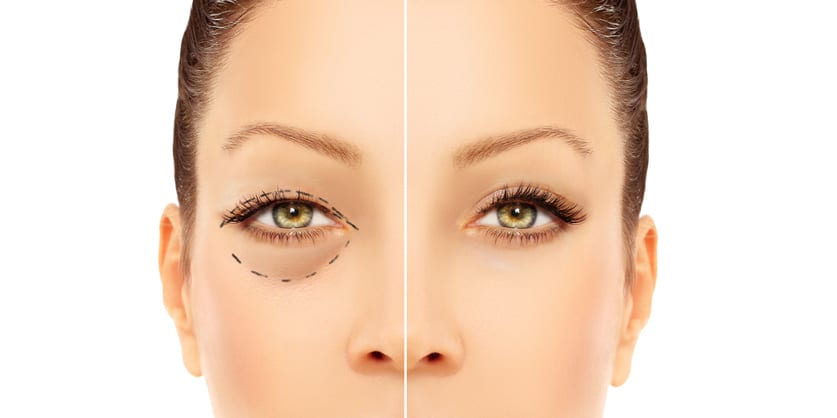1. What Is Blepharoplasty?
A blepharoplasty procedure removes protruding fat and/or loose, sagging skin from the eyelids. It is commonly referred to as eyelid surgery to remove “droopy eyelids”.
There are two forms of blepharoplasty; cosmetic and functional. A cosmetic eyelid surgery is not medically necessary and is performed solely to improve your appearance. A functional eyelid surgery is performed for medical reasons.
2. Who Should Consider Blepharoplasty?
As skin ages, it loses elasticity which can cause droopy eyelids. If you have droopy eyelids where your eyelid skin is beginning to sag, bulge, or otherwise impair your vision, you should consider having a blepharoplasty procedure performed by an ophthalmologist or oculoplastic surgeon.
Other medical conditions that may require functional eyelid surgery include:
- Irritation from excess folds of eyelid skin rubbing together.
- Forehead discomfort from overused muscles that strain to lift sagging skin in the eyelid area.
3. How Is the Eyelid Surgery Performed?
Blepharoplasty can be performed on upper eyelids, lower eyelids, or both at the same time.
During surgery, incisions are made in the natural folds of the eyelid, in the crease of the upper eyelid and just beneath the lashes or behind the lower eyelid. This way, incisions are hidden and least noticeable.
Tissues of the eyelid are removed with surgical instruments. Sutures or tissue adhesives would be carefully applied to smooth and reconfigure areas around the eyebrows and eyelids after the cuts have been made.
4. How Long Is the Blepharoplasty Recovery Process?
During the recovery process, common side effects include swelling, bruising, discomfort, irritation at incision, or dry/irritated eyes. Treatment may include lubricating ointments, cold compresses and medications to apply or take orally to aid healing and reduce the risk of infection. In some cases, patients may need to cover their eyes loosely with gauze.
Often the sutures used for your procedure will dissolve on their own in four to seven days, and you will not need to have them removed. If non-dissolving sutures are used, then your surgeon will remove them about a week after the procedure.
It will be important to use sun protection during the recovery process until fully healed post procedure. Most patients return to normal activities after seven to ten days following a blepharoplasty procedure.
5. Common Medical Terms You’ll Need to Understand
Ectropion: When the lower eyelid is rolled outward after eyelid surgery; often a temporary condition.
General anesthesia: Drugs and/or gases used during an operation to relieve pain and alter consciousness.
Hematoma: Blood pooling beneath the skin.
Intravenous sedation: Sedatives administered by injection into a vein to help you relax.
Local anesthesia: A drug injected directly to the site of an incision during an operation to relieve pain.
Transconjunctival incision: Incision hidden inside the lower eyelid.
Sutures: Stitches used by surgeons to hold skin and tissue together.



